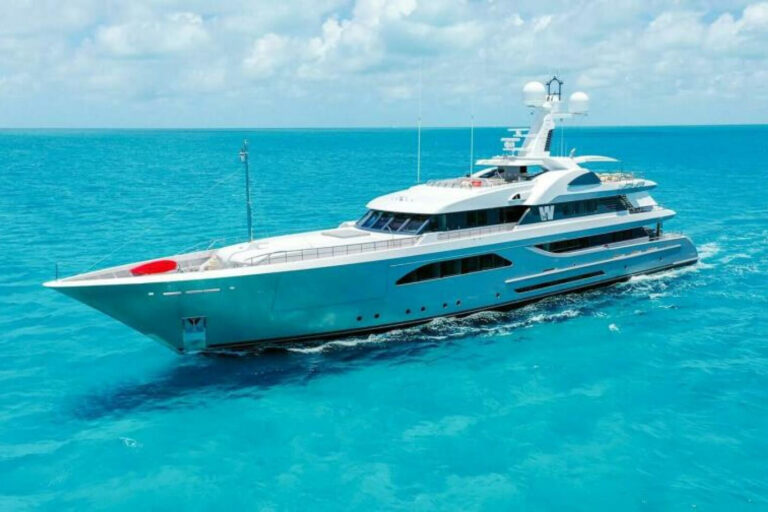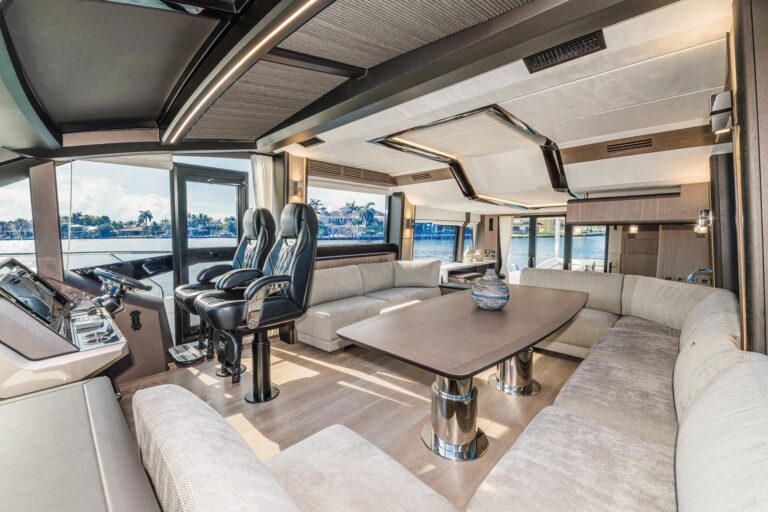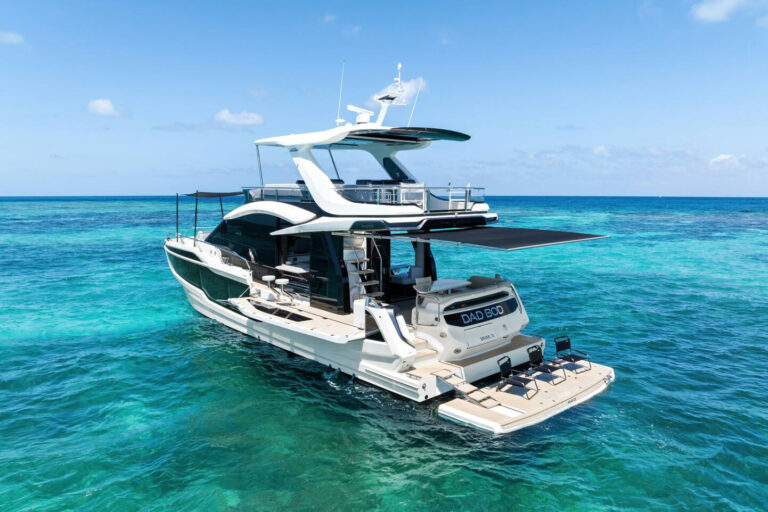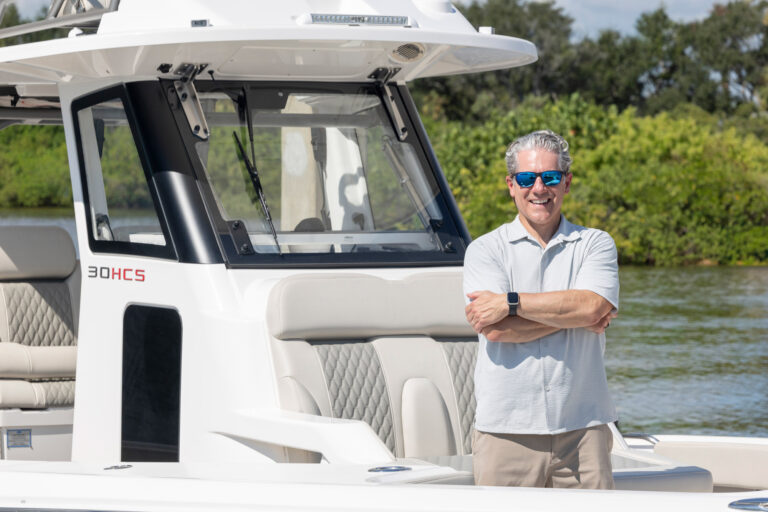The Yeoman electronic chart table is available in three versions. Each is specifically designed to fit a different cruising lifestyle, and all have the unique ability to integrate any chart, including those the navigator prepares, showing areas not otherwise charted with the vessel’s electronic navigation equipment.
The Sport, less than 2 inches thick and weighing only 5.4 pounds, is a portable chart plotter easily carried aboard or used at home to plan voyages. The Navigator Pro is intended for use at a chart table or other sheltered location. The Maxi, which measures 55 inches by 32 inches, is designed to be integrated into a fixed chart table’s surface. Unlike electronic display chart plotters, the brighter the sunlight, the better you can see the chart. (The Yeoman’s plotting mouse has internal lighting for night use.)
The active chart area of the Sport and Navigator Pro models (both available with built-in GPS receiver) holds a standard BBA Chart Book. A transparent plastic envelope protects the chart and comprises the Sport’s working face, and a zipper closure protects the chart book from weather and spray. You may plot courses and write notes on the envelope surface with special pens provided by Yeoman.
To initiate the Yeoman’s electronic navigation functions, enter the location of known positions on a chart. The Sport version has as many as 100 BBA charts in its memory, and it can store up to 100 user waypoints; the other units can handle a maximum of 500 charts and 500 waypoints. You can enter data for charts not already in the memory by using keys on the plotting mouse. If the chart you need is already in the memory, depress the scroll key to display the Chart Library mode, then select the BBA Chart area and the chart’s number. The system prompts entry of each of the three Yeoman reference points printed on the chart. Place the center of the mouse’s plotting circle over each point and press enter.
To initialize a chart not in the memory, go to the Referencing mode and select three arbitrary points. Points 1 and 2 must be on the same line of latitude; point 3 on the same line of longitude as point 2. Enter the lat/lon of each point on the keypad.
Any chart, including one you’ve prepared in advance on a blank sheet of paper, can be used.
Once the system is initialized with chart position information, it can operate in the Yeoman Plot mode. The mouse LCD will display the lat/lon of any point on the plotting surface. Range and bearing to or from any other point will appear on the LCD.
Connecting the Yeoman to a GPS or loran C lets you use Navigation mode. (Connections are easy, and the owner’s manual contains information about popular GPS units.) We got outstanding results with the Yeoman connected to the Furuno GP-36 differential GPS, which has a dedicated interface for the Yeoman.
Data from the GPS appears digitally on the mouse LCD. Moving the mouse to a point directed by the four sunlight-readable red LED steering command indicators around the mouse’s plotting window locates your position on the chart. You can plot your precise position when all four LEDs are extinguished. Position resolution is better than 2 millimeters (about eight-hundredths of an inch).
A Dead Reckoning navigation mode allows you to enter the vessel’s known position, course and speed, and estimated values for current set and drift. Course and speed information in NMEA 0183 format will automatically be entered, and dead reckoning positions can be updated any time with a single keystroke.
Enter waypoints directly by placing the plotting point on the waypoint, or by entering the lat/lon using the keys on the mouse. You can upload waypoints to compatible GPS and loran C units with a keystroke.
The Yeoman can also be connected to a radar to replicate the position of the mouse on the radar screen. This plotting mode is quicker and less error-prone than manual plotting on the radar.
All in all, the Yeoman Electronic Chart Table can’t provide lists of shore facilities or other port-related information. It can’t predict tides and currents, and it will not let you construct a log of a voyage on its display, as a computer will.
However, it will allow you to usefully combine your existing chart library with a GPS, loran C and radar, creating an advanced chart table in an understandable, easy-to-use package.
Prices: Sport XL: $710; GPS Sport XL: $1,144 (built-in GPS); Navigator Pro: $710 (with built-in GPS, $1,108); Maxi, capable of handling two charts simultaneously: $5,500.
Contact: Yeoman Group, (011) 44 1590 679777; www.yeomangroup.plc.uk. B&G USA, (727) 540-0229; www.bandg.com
HOW IT WORKS
The Yeoman’s operating principal will be of interest to technically minded yachtsman. The mouse contains a circular coil of copper wire surrounding the plotting circle (visible through the transparent underside of the mouse). A moderate frequency alternating current circulates through the coil, inducing a current in a printed circuit that underlies the chart board surface. The relative position of the mouse is then detected, with an accuracy of better than plus-or-minus 2 millimeters. The signal from the mouse coil can penetrate more than an inch of paper, allowing precise measurement of position through a thick book of charts. Power consumption is low, about 1/4 amp at 12-volt DC, or the unit can be powered from any convenient AC source. -C.H.









